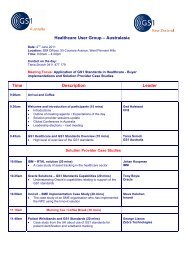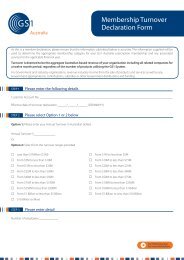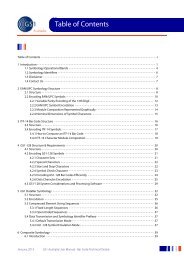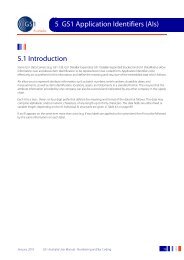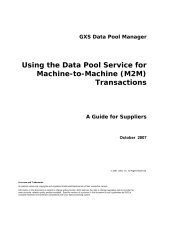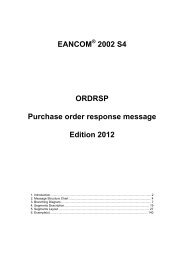You also want an ePaper? Increase the reach of your titles
YUMPU automatically turns print PDFs into web optimized ePapers that Google loves.
Company Profile<br />
11<br />
Kimberly-Clark<br />
Kimberly-Clark <strong>Australia</strong> & New Zealand manufactures,<br />
markets and sells leading health and hygiene products.<br />
The company was an early adopter of electronic data<br />
interchange (EDI) in its healthcare business as well as<br />
being one of the first companies to establish web-based<br />
business-to-business (B2B) trading in 1997.<br />
It was also one of the first manufacturers to support<br />
data synchronisation through <strong>GS1</strong>net and all Kimberly-<br />
Clark products carry <strong>GS1</strong> Bar Codes. In 2009 Kimberly-<br />
Clark established three new distribution centres with<br />
operations dependent on accurate synchronised<br />
material records, and the business approached <strong>GS1</strong><br />
<strong>Australia</strong> to deliver a data-quality solution to achieve this.<br />
The objective of this audit was to assess and rectify<br />
errors with bar code numbers Global Trade Item<br />
Numbers (GTINs), product dimensions, weights,<br />
contents, item descriptions and physical packaging<br />
descriptions across all levels of packaging on<br />
approximately 1,193 imported items. The project also<br />
included physically reviewing a number of data<br />
attributes and comparing this data against internal<br />
systems to ensure information was accurate and<br />
complete.<br />
The company decided to focus on externally procured<br />
stock-keeping units (SKUs), which in the past had not<br />
been as rigorously controlled as internally manufactured<br />
SKUs. The company suspected that the bar coding and<br />
data on these SKUs was not meeting <strong>GS1</strong> standards.<br />
During the physical audit products’ bar codes were<br />
scanned, packaging levels opened and pack quantities<br />
counted and recorded. The team measured all stock<br />
dimensions and recorded gross and net weight. The<br />
actual audit covered 907 products comprising 1,526<br />
packaging levels. The audit focused on products for<br />
which the data was suspected to be inaccurate.<br />
It found that:<br />
• Dimensions for almost 100% of consumer (base) and<br />
intermediate units, and a high percentage of case units, were<br />
missing or wrong in SAP.<br />
• Weights for almost 100% of all units were missing or<br />
wrong in SAP<br />
• The contents of some Cases, Intermediate and Consumer (Base)<br />
units for a few materials were wrong in SAP<br />
Some 18 months later, Kimberly-Clark’s data was consistently of<br />
a higher quality than its competitors in this <strong>Data</strong> <strong>Crunch</strong> Study,<br />
scoring much greater alignment with all retailers.<br />
323<br />
Products<br />
354<br />
Products<br />
46<br />
Products<br />
8<br />
Products<br />
Wrong GTIN in SAP<br />
for the Case unit<br />
Wrong GTIN in SAP for<br />
the Consumer (Base) unit<br />
Intermediate pack levels<br />
that were not defined<br />
in SAP, and were missing<br />
their GTINs and dimensions<br />
Had Consumer (Base) unit<br />
pack levels that were not<br />
defined in SAP, and were<br />
missing their GTINs and<br />
dimensions






